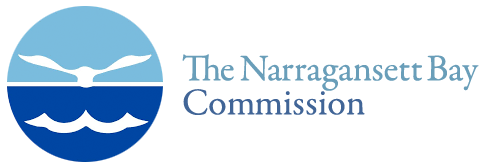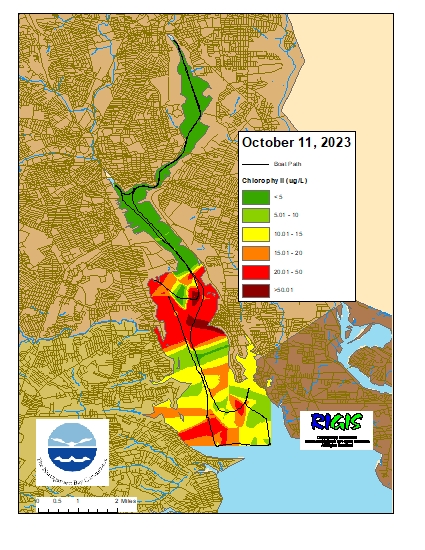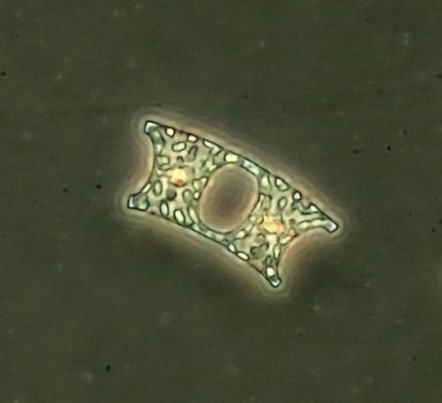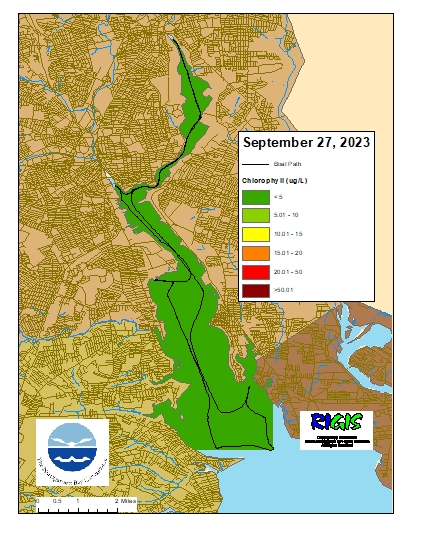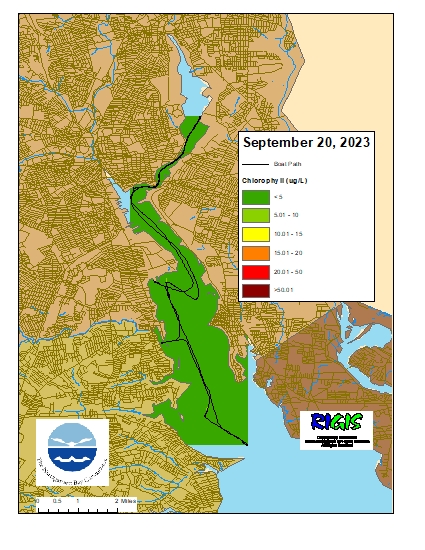Week of October 15 – October 21, 2023
Nutrient samples were collected from 14 river stations and 8 bay stations on October 18th. Edgewood Shoal was sampled at the surface and bottom; all other bay stations were sampled at the surface only. In the five days prior to sampling, there was only traces of rainfall recorded at T.F. Green.
Among the river stations sampled, the highest total nitrogen (TN), total dissolved nitrogen (TDN), and dissolved inorganic nitrogen (DIN) concentrations were observed at Ten Mile River @ Central Ave. (TN = 1,535 ppb, TDN = 1,640 ppb, DIN = 1,262 ppb, all averaged with duplicates). The lowest TN and TDN were observed at Moshassuck River @ Higginson Ave. (TN = 524 ppb, TDN = 586 ppb), while the lowest DIN was at Palmer River @ Rt. 6. (DIN = 110 ppb).
Among the bay stations sampled, the highest surface TN and TDN were observed at Phillipsdale Landing (TN = 1,150 ppb, TDN = 1,160 ppb), while the highest surface DIN was observed at Pawtuxet Cove (DIN = 689.5 ppb, average of duplicates). The lowest surface TN and TDN were observed at Conimicut Point (TN = 609 ppb, TDN = 606 ppb), while the lowest surface DIN was at Bullock Reach Buoy (DIN = 202.6 ppb). Chlorophyll a concentrations at the surface bay stations averaged 3.88 μg/L overall with a maximum of 7.75 μg/L at the India Point Park.
